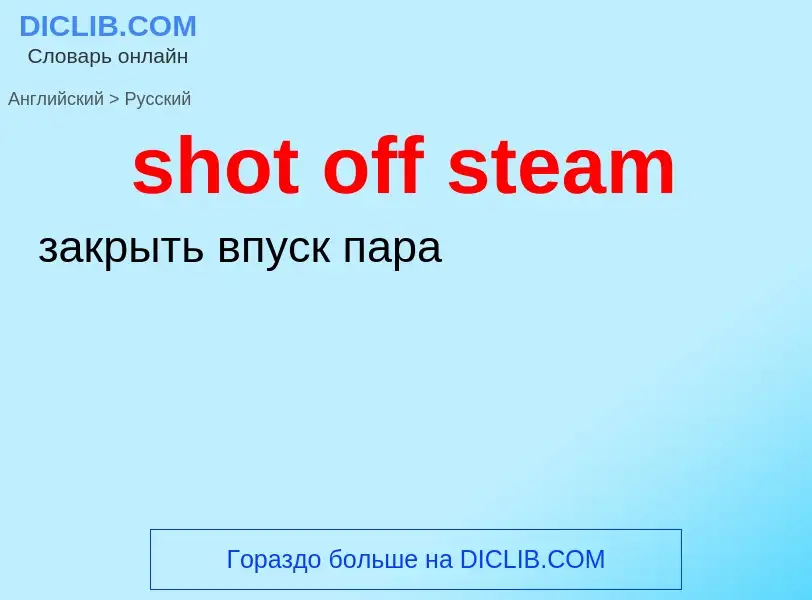Translation and analysis of words by ChatGPT artificial intelligence
On this page you can get a detailed analysis of a word or phrase, produced by the best artificial intelligence technology to date:
- how the word is used
- frequency of use
- it is used more often in oral or written speech
- word translation options
- usage examples (several phrases with translation)
- etymology
shot off steam - translation to russian
[split|'ʃɔt-{split}'strəuk]
общая лексика
удар
посылающий два или более соприкасающихся шара в разные направления (бильярд)
['ʃɔtput]
существительное
спорт
толкание ядра
Definition
Wikipedia
In a steam engine, cutoff is the point in the piston stroke at which the inlet valve is closed. On a steam locomotive, the cutoff is controlled by the reversing gear.
The point at which the inlet valve closes and stops the entry of steam into the cylinder from the boiler plays a crucial role in the control of a steam engine. Once the valve has closed, steam trapped in the cylinder expands adiabatically. The steam pressure drops as it expands. A late cutoff delivers full steam pressure to move the piston through its entire stroke, for maximum start-up forces. But, since there will still be unexploited pressure in the cylinder at the end of the stroke, this is achieved at the expense of engine efficiency. In this situation the steam will still have considerable pressure remaining when it is exhausted resulting in the characteristic “chuff chuff” sound of a steam engine. An early cutoff has greater thermodynamic efficiency but results in a lower Mean effective pressure so less average force on the piston and is used for running the engine at higher speeds.


![Clifton Hill]], [[Melbourne]], Australia Clifton Hill]], [[Melbourne]], Australia](https://commons.wikimedia.org/wiki/Special:FilePath/Clifton hill shot tower melbourne australia.jpg?width=200)
![post-medieval]] lead shot post-medieval]] lead shot](https://commons.wikimedia.org/wiki/Special:FilePath/Collection of thirty cast lead round shot. Probably Post Medieval (AD 1500 - AD 1800). (FindID 93511).jpg?width=200)


![Czechoslovak shot putter [[Jiří Skobla]] showing the correct technique for keeping the shot near the neck Czechoslovak shot putter [[Jiří Skobla]] showing the correct technique for keeping the shot near the neck](https://commons.wikimedia.org/wiki/Special:FilePath/Bundesarchiv Bild 183-44941-0005, Jiri Skobla.jpg?width=200)
![Plíhal]] at the 1957 East German Indoor Athletics Championships Plíhal]] at the 1957 East German Indoor Athletics Championships](https://commons.wikimedia.org/wiki/Special:FilePath/Bundesarchiv Bild 183-44941-0006, Plihan.jpg?width=200)

